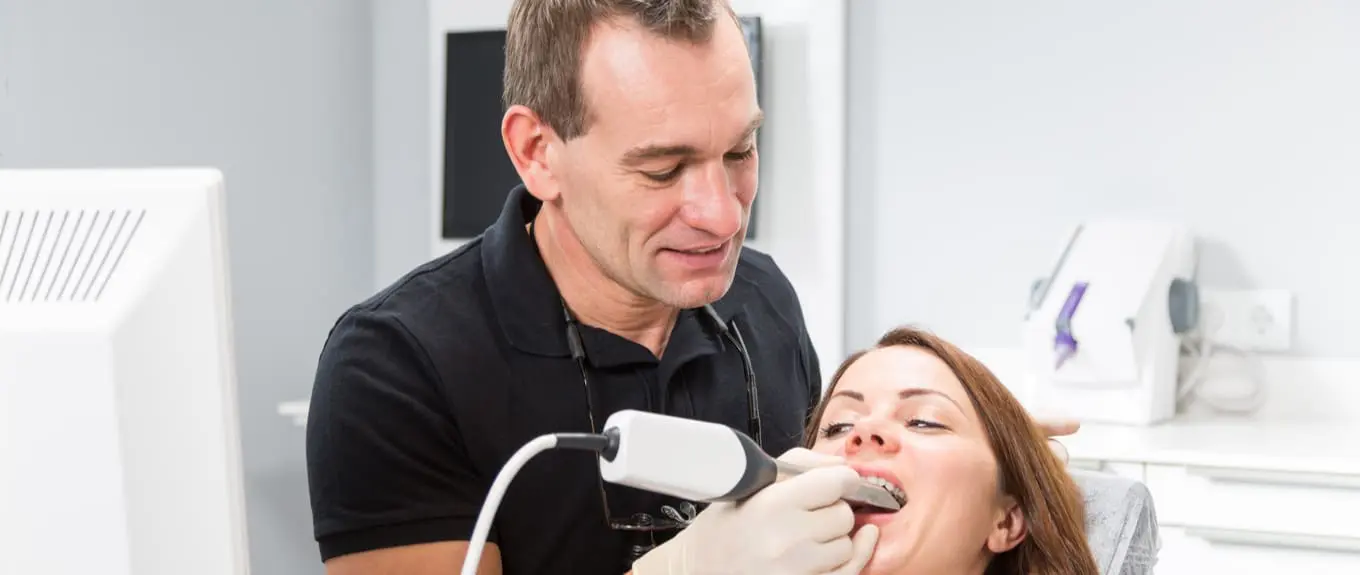Fixed Retention: Has the time for CAD-CAM come?
In recent years, the quest for a magic mechanical bullet to address the perennial issue of finding the optimal approach to prolonged retention has gathered pace.
In particular, we have developed novel designed fixed and removable retainers. We have been able to use CAD-CAM technology to develop both proprietary and in-house fixed retainers. However, there has been relatively little research concerning the latter, in particular.
A team from St Louis did this study. The Angle Orthodontist published the paper.
The authors aimed to compare the changes arising in the lower anterior region with three fixed retainer options over six months.

Comparative assessment of relapse and failure between CAD/CAM stainless steel and standard stainless steel fixed retainers in orthodontic retention patients:
A randomised controlled trial.
Authors: Hun Shim, Patrick Foley, Brent Bankhea, Ki Beom Kim
Angle Orthod. doi: 10.2319/121720-1015.1
What did they do?
They conducted a three-group randomised controlled trial involving 75 participants.
Participants:
Patients with a range of malocclusion treated with fixed appliances to a good Class I finish who needed lower fixed retention.
Intervention Groups:
- Intervention: A novel, in-office CAD-CAM retainer fabricated using Fix-R software and the Bender1 Machine. The clinicians made the retainer from multi-stranded stainless steel (Dentaflex, Dentaurum)
- Control: A lab-made indirect version of the multi-stranded stainless steel (Dentaflex, Dentaurum) wire bent by an experienced technician
- Control: A ‘traditional’ group involving direct placement of stainless steel Ortho-FlexTech
The operator placed all the wires using the standard enamel preparation technique and flowable composite.
Intra-oral scans were obtained at debonding (T1), three months (T2), and six months (T3) using calibrated Trios scans (3Shape). In addition, they measured inter-canine width and Little’s Irregularity Index using the Meshlab open source software using a 3-dimensional (3D) ruler. Failure of retainers was recorded at each visit, although they excluded from analysis participants who lost the wire completely.
What did they find?
There was a significant loss to follow-up with 46 (of 75 recruited) attending at three months and just 24 at six months. As such, the primary analyses seem to have been based on the more plentiful data available at the 3-month interval. A greater decrease in inter-canine width was found in the CAD-CAM than in the Ortho-FlexTech group (P< 0.001). However, it is notable that they observed a significantly more treatment-induced increase in the inter-canine width in the Ortho-FlexTech group. Importantly, they did not consider this confounding effect in the analysis. Moreover, no difference was found concerning Little’s index scores between the two techniques at either 3- or 6-month follow-up.
Failure rates were high at 28.3% overall, with, for example, 7 of 16 retainers in the lab-made group failing over the first three months. The corresponding failure rates with the CAD-CAM and traditional techniques were 25% and 14%, respectively.
What did I think?
We know from past and recent experience that new products are often released to the market without being subject to this type of independent testing. Nevertheless, I think this was an interesting study, and it is good to see novel techniques being developed and tested within academic centres. The accessibility to 3D printing techniques will hopefully expedite this type of academic endeavour in the coming years.
Failure rate
As with any study, there are limitations, and the authors acknowledged many of these in the Discussion. The authors suggest that the failure rates described are mainly in keeping with previous research. This may be the case; however, I cannot help feeling that these failure rates are very high and may reflect the bonding techniques rather than the tools used. There is undoubtedly a learning curve associated with the placement of fixed retainers generally but also with specific retainer variants. It is therefore intuitive that these failure rates will vary considerably with different operators and levels of experience. We, therefore, cannot be sure that we can apply the findings from this study more widely to other situations and operators.
Allocation
I was a little uncertain as to why the numbers allocated to each group were uneven (with 30 in the CAD-CAM group and just 20 in the lab-made group). The significant loss to follow-up compounded this. Attrition of the sample is a significant problem in prospective research involving retention with patients no longer in active treatment and often have little incentive to return for further review. This loss to follow-up was significant, particularly at the 6-month period; as such, the study was of a short-term nature. This problem is important as we all know that the challenge of maintaining optimal outcomes is open-ended. Furthermore, one could argue that a potential benefit of CAD-CAM wires is ‘goodness-of-fit which might limit (but not eliminate) the potential for unwanted activation of wires in the longer term. This short-term evaluation may not provide a clear picture of the relative merits of the various wire options.
Outcomes
A final point relates to the outcomes assessed within the trial. The primary outcomes included both inter-canine width change and the development of irregularity (using Little’s index). While these two outcomes are linked, it was interesting to see that the findings did not always correspond with each other. This inconsistency may stem from the variable changes in inter-canine width introduced during active treatment. These could not be accounted for in the statistical analysis (primarily because of the low numbers of participants analysed). From a clinical (and patient) perspective, it would be reasonable to suggest that the irregularity scores are more pertinent than inter-canine width changes.
What can we conclude?
The authors reported high failure rates with CAD-CAM, lab-made and directly placed fixed retainers. While CAD-CAM approaches may show some promise, there is no clear evidence of benefit over established alternatives in the short term. Further, longer-term studies are therefore warranted. While this study represents a good starting point, we will need to continue to refine our retention protocols until that magic bullet falls into our laps.

Professor of Orthodontics, Trinity College Dublin, The University of Dublin, Ireland
While I personally don’t like any of the fixed retainer choices described in this article, I love the idea of fixed retention and the drop out rate in this study is a perfect example of why fixed retention is so valuable to us as practitioners. While I can have patients sign a document at the end of treatment acknowledging the importance of retainer follow through and, while that may cover me legally, relapse does nothing to enhance my reputation as a practitioner. Making retention as easy as possible using fixed methods whenever possible is the key to long term success.
I would respectfully disagree with Dr Ruff’s comments. If anything, the drop out rate as seen in this study is exactly why I have moved away from fixed retention. If we place the fixed retainer with the patient disappearing, who knows what kind of condition their perio might be in. Or perhaps more concerning, without adequate hygiene and follow-up with their GP, do they have interproximal decay in the area of the fixed retainer. Sadly, I have seen this happen one too many times. I don’t even consider fixed retention unless the patient demonstrated good hygiene during active ortho. I tell all my patients at debond that they need to take ownership in retention with their removable retainers. Our work and effort achieved with active orthodontic therapy can all be lost if they don’t take a proactive approach when it comes to retention.
Fixed retention is highly technique sensitive and requires extreme attention to detail and prior preparation before and while carrying out the procedure.
It is important that the patient gets a clean at least a week before placing the retainers, important to have some form of magnifying loops on while carrying out the procedure.
I have outlined the technique I use in the comments section in a previous post on a similar topic by Kevin. In spite of following all those steps I still see some failures from time to time but relatively few.
Since I am interested in the topic of retention and relapse and I consider it the final frontier, at the initial consult I tell the patients that post removal of braces I will need to see them 6 weeks first, 3 months later, 6 months in the first year and every year after, indefinitely for free. At each appointment they need to come in with their upper Essix retainer and I check their lower wires with loops ( on many an occasion it is off a tooth but the composite pad is stuck to the wire and hard to tell without loops), and a curved probe by gently checking around the composite. If it is off a tooth it needs to be glued back on which is a topic for another day. At each such follow up appointment we also do photos which is great as follow up records to compare treatment outcomes.
An interesting study would be to see how many treated patients in their teens are seeking orthodontic treatment again as young adults due to relapse: lost time, effort, money and a bad name to the clinician as eventually it is all our fault. I am quite sure it a big number and would be I presume a substantial market share of aligner cases.
Why was the best lower 3-3 design not included (i.e. heavy fixed SS wire bonded to canines only)?
Multi-strand wires are the worst wire to use for long term retention because of the internal stresses in the wire and the requirement to bond to every tooth.
Ortho-FlexTech is not like tradational multi-stranded wire, it is unique because it very difficult (or impossible) to build internal stresses in it.
Bottom line,this failure level is not a financially viable approach for a busy practice.
FYI,on debonding we routinely use FR,s but only for areas that “really” need them.Pts sign a retn.contract.Essixs ,night wear for life.No follow up as pts know what is required.Any relapse is generally pt compliance related.Retreatment involves another fee.
why cant simple clinical questions be answered by doing a properly conducted trial. Too many studies are published with flawed methodologies. If the academic community know how to conduct a high level trial, why are we still faced with the quote “high level evidence is lacking and better studies are needed”. This has been the case for many years.